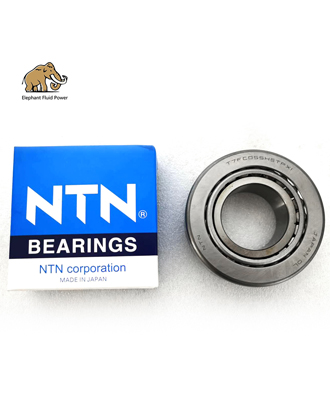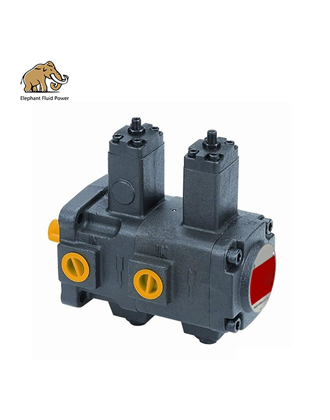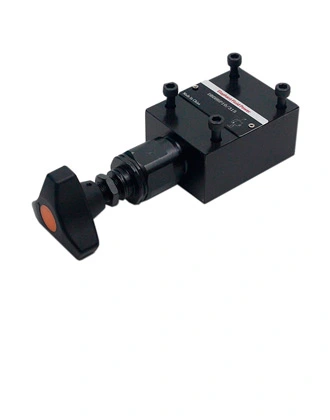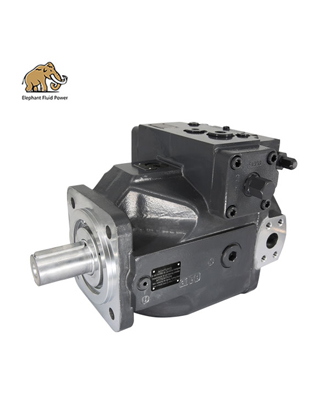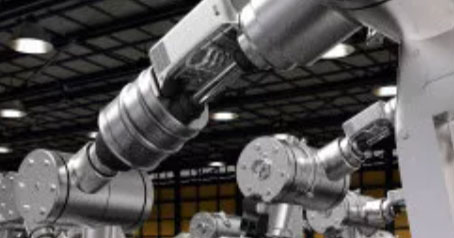The hydraulic bearing is improved on the basis of the oil-impregnated bearing, so the hydraulic bearing is still essentially an oil-impregnated bearing. However, after this improvement, the hydraulic bearing has a larger oil storage space than the oil-impregnated bearing, and has a unique loop-back oil supply circuit. Its service life is greatly extended compared with ordinary oil-sealed bearings, and it inherits the advantages of oil-impregnated bearings - low operating noise.
Ⅰ. The advantages of hydraulic bearings
1. The hydraulic bearing improves the non-sealed design of the bottom of the traditional bearing, and seals the bottom of the bearing to form a closed oil-retaining design. This effectively prevents the volatilization of lubricating grease and dust from entering the inside of the bearing. As a result, bearing service life can be greatly extended.
2. Due to the non-sealed design of the bottom of traditional bearings, the lubricating oil cannot be stored too much. Hydraulic bearings use the characteristics of the closed bottom to design a large oil storage space, which can store a large amount of lubricating grease. This keeps the bearing in a lubricated state at all times, which greatly improves the stability of the hydraulic bearing.
3. The hydraulic bearing adopts special low-wear, high-temperature resistant grease. This grease has a low wear rate and is resistant to high temperatures. Even if the hydraulic bearing works continuously for a long time and is in a high temperature state, the grease in the hydraulic bearing will not volatilize, ensuring a good lubrication effect on the bearing.
4. The hydraulic bearing also uses a permeable oil circuit design, which makes the bearing and the oil storage tank communicate with each other, which is conducive to the smooth entry of the lubricating grease in the oil storage tank into the bearing. At the same time, it also uses powder metallurgy to make bearings with special metals. There are tiny voids on the bearing, soak the bearing in special lubricating grease to fill the void with grease. During the operation of the hydraulic bearing, grease continuously overflows to lubricate the bearing. With the design of the permeable oil circuit, the bearing and the oil storage tank are connected as a whole, and the lubricating grease can flow freely, truly achieving unlimited self-overflow lubrication.
Ⅱ. The difference between oil bearing and hydraulic bearing
Oil-impregnated bearings, usually clasps are sleeved on the copper core, and grease is stored in the middle. This type of fan has relatively low noise in the early stage, low cost, but short life, usually around 20,000 hours. In the late stage of application, due to the consumption of lubricating oil, the noise will gradually increase and the speed will also decrease.
Hydraulic bearings are improved on the basis of oil-impregnated bearings. Hydraulic bearings have a larger oil storage space than oil-impregnated bearings, and have a unique loop-back oil supply circuit. The working noise of the hydraulic bearing fan has been significantly reduced, and the application time is also very long, which can reach 40,000 hours. The essence of hydraulic bearing is still an oil bearing.
 French
French
 Portuguese
Portuguese
 Russian
Russian
 German
German
 Spanish
Spanish
 Japanese
Japanese
 Korean
Korean
 Irish
Irish
 Greek
Greek
 Turkish
Turkish
 Italian
Italian
 Danish
Danish
 Romanian
Romanian
 Indonesian
Indonesian
 Czech
Czech
 Afrikaans
Afrikaans
 Swedish
Swedish
 Polish
Polish
 Basque
Basque
 Catalan
Catalan
 Esperanto
Esperanto
 Hindi
Hindi
 Lao
Lao
 Albanian
Albanian
 Amharic
Amharic
 Armenian
Armenian
 Azerbaijani
Azerbaijani
 Belarusian
Belarusian
 Bengali
Bengali
 Bosnian
Bosnian
 Bulgarian
Bulgarian
 Cebuano
Cebuano
 Chichewa
Chichewa
 Corsican
Corsican
 Croatian
Croatian
 Dutch
Dutch
 Estonian
Estonian
 Filipino
Filipino
 Finnish
Finnish
 Frisian
Frisian
 Galician
Galician
 Georgian
Georgian
 Gujarati
Gujarati
 Haitian
Haitian
 Hausa
Hausa
 Hawaiian
Hawaiian
 Hebrew
Hebrew
 Hmong
Hmong
 Hungarian
Hungarian
 Icelandic
Icelandic
 Igbo
Igbo
 Javanese
Javanese
 Kannada
Kannada
 Kazakh
Kazakh
 Khmer
Khmer
 Kurdish
Kurdish
 Kyrgyz
Kyrgyz
 Latin
Latin
 Latvian
Latvian
 Lithuanian
Lithuanian
 Luxembourg
Luxembourg
 Macedoniar
Macedoniar
 Malagasy
Malagasy
 Malay
Malay
 Malayalam
Malayalam
 Maltese
Maltese
 Maori
Maori
 Marathi
Marathi
 Mongolian
Mongolian
 Burmese
Burmese
 Nepali
Nepali
 Norwegian
Norwegian
 Pashto
Pashto
 Persian
Persian
 Punjabi
Punjabi
 Serbian
Serbian
 Sesotho
Sesotho
 Sinhala
Sinhala
 Slovak
Slovak
 Slovenian
Slovenian
 Somali
Somali
 Samoan
Samoan
 Scots Gaelic
Scots Gaelic
 Shona
Shona
 Sindhi
Sindhi
 Sundanese
Sundanese
 Swahili
Swahili
 Tajik
Tajik
 Tamil
Tamil
 Telugu
Telugu
 Thai
Thai
 Ukrainian
Ukrainian
 Urdu
Urdu
 Uzbek
Uzbek
 Vietnamese
Vietnamese
 Welsh
Welsh
 Xhosa
Xhosa
 Yiddish
Yiddish
 Yoruba
Yoruba
 Zulu
Zulu

